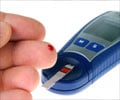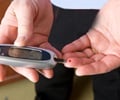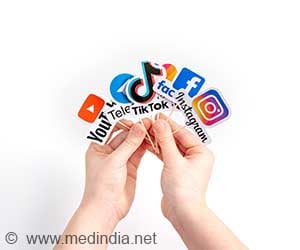Checking blood sugar levels with finger-stick blood test may not benefit diabetes patients who do not use insulin.
Highlights
- Diabetes is a condition characterized by high blood glucose levels.
- Scientists have found that testing the blood sugar levels using finger-stick blood test may not offer an advantage in blood sugar control.
- The finger-stick blood test may not benefit patients with type 2 diabetes who are not treated with insulin.
TOP INSIGHT
Finger-stick blood test may not benefit type 2 diabetes patients.
Around one out of 11 people in the United States have type 2 diabetes. Often, people who are treated with insulin therapy can check their blood sugar with a finger stick at home. This is an accepted practice for monitoring the effects of insulin therapy.
However, it is to be noted that most of the type 2 diabetes patients are not being treated with insulin. Around 25 million people in the United States do not take insulin. Most of them control blood sugar by exercise, diet and also medications like metformin. These patients are often recommended to take glucose monitoring despite its effectiveness in controlling diabetes or improving the patients condition.
Katrina Donahue, MD, MPH, senior author of the study, Professor and Director of Research at UNC Family Medicine, said, "Our study results have the potential to transform current clinical practice for patients and their providers by placing a spotlight on the perennial question, 'to test or not to test?”
Blood Sugar Monitoring
The study was carried out for one year on 450 patients who were assigned to one of the three groups
- No blood sugar monitoring
- Once daily glucose monitoring
- Enhanced once-daily glucose monitoring along with an internet-delivered tailored message of encouragement or instruction.
The findings of the study revealed that:
- There were no significant differences in blood glucose control within the three groups.
- No significant differences found in health-related quality of life.
- And also there were no notable differences in low blood sugar levels (hypoglycemia), hospitalizations, emergency room visits.
"But the study's null results suggest that self-monitoring of blood glucose in non-insulin treated type 2 diabetes has limited utility. For the majority, the costs may outweigh the benefits."
The blood glucose testing could promote daily testing for better awareness of glucose levels; this could lead to improvements in diet and lifestyle.
However, in the past there may be a number of smaller clinical trials that has been showing mixed results.
Most of the studies were found to show a benefit for testing. However, others found no evidence of benefit or that it could be harmful. Daily testing could impose not only a financial cost or can also take a mental toll to increase the rate of depression or anxiety in some patients.
Laura Young, MD, PhD, the paper’s first author, said, "There was no difference between either type of testing."
"Enhanced Self-Monitoring Blood Glucose, in the pragmatic setting of regular daily life, offered no additional health benefits."
Young added, "There has been a lack of consensus, not just in the United States, but worldwide."
"The lack of standard guidelines makes it all the more difficult for patients, who are already struggling to manage a chronic condition. And at the end of the day, patients have to make a choice."
The patients living with diabetes could discuss the need for blood sugar monitoring along with health care providers.
If a patient and their provider could decide that blood sugar monitoring is not necessary. Then the usage of hundreds of finger sticks could help to save hundreds of dollars every year, until insulin treatment is required.
Blood Sugar Test
The blood glucose test can help to measure the amount of blood glucose in the sample. The blood sample is collected and the test can be done in the following ways:
- Fasting blood glucose levels (normally fasting for about 8 hours)
- Random blood glucose levels
- Two hours after drinking a certain amount of glucose (Oral glucose tolerance test)
- Laura A. Young, John B. Buse, Mark A. Weaver, Maihan B. Vu, C. Madeline Mitchell, Tamara Blakeney, Kimberlea Grimm, Jennifer Rees, Franklin Niblock, Katrina E. Donahue. Glucose Self-monitoring in Non–Insulin-Treated Patients With Type 2 Diabetes in Primary Care Settings. JAMA Internal Medicine, 2017; DOI: 10.1001/jamainternmed.2017.1233
- Blood sugar test - blood - (https://medlineplus.gov/ency/article/003482.htm)
Source-Medindia
 MEDINDIA
MEDINDIA




 Email
Email










